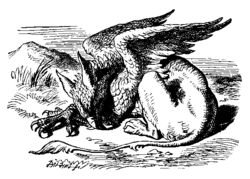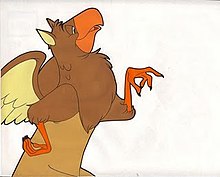
The Cheshire Cat is a fictional cat popularised by Lewis Carroll in Alice's Adventures in Wonderland and known for its distinctive mischievous grin. While now most often used in Alice-related contexts, the association of a "Cheshire cat" with grinning predates the 1865 book. It has transcended the context of literature and become enmeshed in popular culture, appearing in various forms of media, from political cartoons to television, as well as in cross-disciplinary studies, from business to science. One distinguishing feature of the Alice-style Cheshire Cat involves a periodic gradual disappearance of its body, leaving only one last visible trace: its iconic grin. He belongs to the Duchess.

The Hatter is a fictional character in Lewis Carroll's 1865 book Alice's Adventures in Wonderland and its 1871 sequel Through the Looking-Glass. He is very often referred to as the Mad Hatter, though this term was never used by Carroll. The phrase "mad as a hatter" pre-dates Carroll's works. The Hatter and the March Hare are referred to as "both mad" by the Cheshire Cat, in Alice's Adventures in Wonderland in the sixth chapter titled "Pig and Pepper".
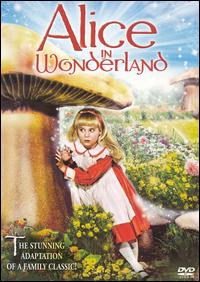
Alice in Wonderland is a 1985 American two-part made-for-television adventure family fantasy musical film of Lewis Carroll's books Alice's Adventures in Wonderland (1865) and Through the Looking-Glass (1871). An Irwin Allen production, it used a huge all-star cast of notable actors and actresses. The title role was played by Natalie Gregory, who wore a blonde wig for this miniseries. Alice in Wonderland was first telecast December 9, 1985, and December 10, 1985, at 8:00pm EST on CBS.

The Queen of Hearts is a fictional character and the main antagonist in the 1865 book Alice's Adventures in Wonderland by Lewis Carroll. She is a childish, foul-tempered monarch whom Carroll himself describes as "a blind fury", and who is quick to give death sentences at even the slightest of offenses. One of her most famous lines is the oft-repeated "Off with his/her head!" / "Off with their heads!"

The White Rabbit is a fictional and anthropomorphic character in Lewis Carroll's 1865 book Alice's Adventures in Wonderland. He appears at the very beginning of the book, in chapter one, wearing a waistcoat, and muttering "Oh dear! Oh dear! I shall be too late!" Alice follows him down the rabbit hole into Wonderland. Alice encounters him again when he mistakes her for his housemaid Mary Ann and she becomes trapped in his house after growing too large. The Rabbit shows up again in the last few chapters, as a herald-like servant of the King and Queen of Hearts.

Alice in Wonderland is a 1951 American animated musical fantasy comedy film produced by Walt Disney Productions and based on the Alice books by Lewis Carroll. The thirteenth release of Disney's animated features, the film features the voices of Kathryn Beaumont, Ed Wynn, Richard Haydn, Sterling Holloway, Jerry Colonna, Verna Felton, J. Pat O'Malley, Bill Thompson, and Heather Angel. The film follows a young girl named Alice who falls down a rabbit hole to enter Wonderland, ruled by the Queen of Hearts. Along the way, she encounters an odd assortment, including the Mad Hatter and Cheshire Cat.
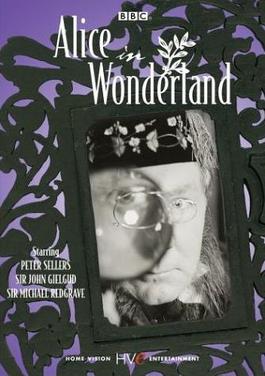
Alice in Wonderland is a 1966 BBC television play, shot on film, based on Lewis Carroll's 1865 book Alice's Adventures in Wonderland. It was adapted, produced and directed by Jonathan Miller, then best known for his appearance in the satirical revue Beyond the Fringe.
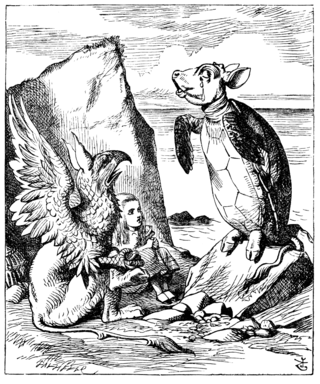
The Mock Turtle is a fictional character devised by Lewis Carroll from his popular 1865 book Alice's Adventures in Wonderland. Its name is taken from a dish that was popular in the Victorian period, mock turtle soup.
Bill the Lizard is a fictional character appearing in Lewis Carroll's 1865 novel Alice's Adventures in Wonderland.

The Caterpillar is a fictional character appearing in Lewis Carroll's 1865 book Alice's Adventures in Wonderland.
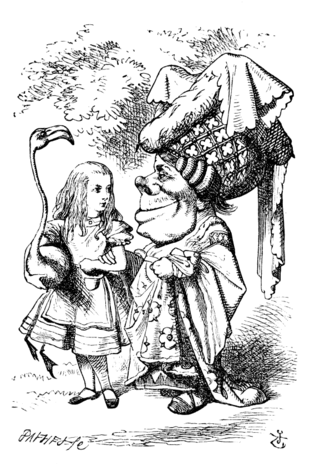
The Duchess is a character in Lewis Carroll's Alice's Adventures in Wonderland, published in 1865. Carroll does not describe her physically in much detail, although as stated in Chapter 9, "Alice did not much like keeping so close to her: first, because the Duchess was very ugly; and secondly, because she was exactly the right height to rest her chin upon Alice’s shoulder, and it was an uncomfortably sharp chin." Her hideous appearance and short stature is strongly established in the popular imagination thanks to John Tenniel's illustrations and from context it is clear that Alice finds her quite unattractive.
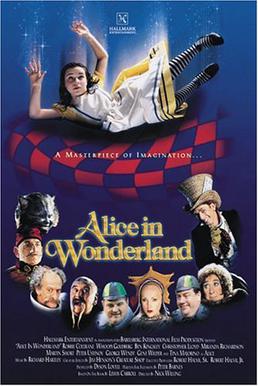
Alice in Wonderland is a 1999 made-for-television film adaptation of Lewis Carroll's books Alice's Adventures in Wonderland (1865) and Through the Looking-Glass (1871). It is currently the last production to adapt the original stories and was first broadcast on NBC and then shown on British television on Channel 4.

Lewis Carroll's books Alice's Adventures in Wonderland (1865) and Through the Looking-Glass (1871) have been highly popular in their original forms, and have served as the basis for many subsequent works since they were published. They have been adapted directly into other media, their characters and situations have been appropriated into other works, and these elements have been referenced innumerable times as familiar elements of shared culture. Simple references to the two books are too numerous to list; this list of works based on Alice in Wonderland focuses on works based specifically and substantially on Carroll's two books about the character of Alice.

Fushigi no Kuni no Alice is an anime adaptation of the 1865 novel Alice's Adventures in Wonderland which ran on the TV Tokyo network and other local stations across Japan from October 10, 1983 to March 26, 1984. The series was a Japanese-German co-production between Nippon Animation, TV Tokyo and Apollo Films. The series consists of 52 episodes, however, only 26 made it to the US.

"'Tis the Voice of the Lobster" is a poem by Lewis Carroll that appears in Chapter 10 of his 1865 novel Alice's Adventures in Wonderland. It is recited by Alice to the Mock Turtle and the Gryphon.

The Dormouse is a character in "A Mad Tea-Party", Chapter VII from the 1865 novel Alice's Adventures in Wonderland by Lewis Carroll.

Alice in Wonderland is a musical by Henry Savile Clarke, Walter Slaughter (music) and Aubrey Hopwood (lyrics), based on Lewis Carroll's books Alice's Adventures in Wonderland (1865) and Through the Looking-Glass (1871). It debuted at the Prince of Wales Theatre in the West End in 1886.

Wonderland is the setting for Lewis Carroll's 1865 children's novel Alice's Adventures in Wonderland.
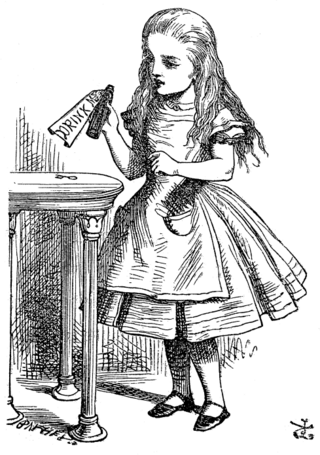
Alice, the main protagonist of Lewis Carroll's novels Alice's Adventures in Wonderland (1865) and Through the Looking-Glass (1871), has been adapted to several media.
